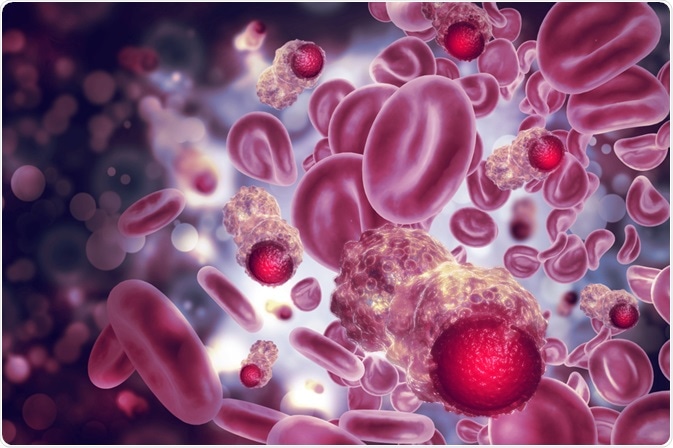Heterogeneity in cancer
In many cancers, not all areas of the tumor are the same; this is said to be “heterogeneous”. This is a process that occurs progressively. This can arise through genomic alterations (mutations and chromosomal alterations) acquired by tumor cells, which subsequently leads to a difference in the phenotype.

Image Credit: crystal light/Shutterstock.com
Another way in which a tumor gains heterogeneity is through the interaction of cancer cells with so-called “bystander cells” present in the microenvironment, such as stromal cells.
Why is this a problem? – the example of prostate cancer
A prominent feature of prostate cancer is its heterogeneity in the way the tumor responds to androgens (male hormones); studies have revealed that initially the tumor relies on androgens to survive and is thus responsive to therapies that aim to reduce the androgen levels.
As the tumor progresses, however, heterogeneity develops so that some parts of the tumor become resistant to these androgen targeting therapies. This, in turn, makes the tumor more likely to persist or recur and impacts its ability to become malignant.
A study has shown that during xenograft tumor formation (using a prostate cancer cell line, ARCaP), the ARCaP cells became heterogeneous through the irreversible acquisition of mesenchymal stromal characteristics from the xenograft.
So, clearly the interaction or fusion between cancer cells and stromal cells is important in understanding how a tumor becomes heterogeneous. How does this occur, and how can techniques using fluorescence help identify these mechanisms?
Using fluorescence microscopy
In a study, Wang, and co. used fluorescence microscopy to study the fusion of prostate cancer cells (LNCaP cells) and prostate myofibroblast cells. Here, the LNCaP cells were tagged with a red fluorescent dye and were placed onto a confluent layer of the prostate myofibroblast cell line.
The authors observed this co-culture over time using fluorescence microscopy and found that the stromal cells began to gain red fluorescence. This was seen in stromal cells that were close to the LNCaP cells and seemed to be the result of a fusion between the stromal cells and the LNCaP cells; in some instances, the authors observed a partial fusion between these two cell types.
Looking closer, the authors noted that these fluorescent stromal cells actually had two nuclei with one bearing red fluorescence, further adding evidence for fusion between stromal and LNCaP cells.
In a separate study, the same group utilized dual fluorescence to aid the identification of cancer-stromal cell fusions. This allowed them to observe fusion events closer.
Here, they used the LNCaP cells, but these were tagged with the fluorescent marker RFP (red) and then a prostate stromal cell which was tagged with a different fluorescent marker, GFP (green). This meant that the cancer cell (LNCaP cells) would be green while the stromal cells would be red when observed under fluorescent microscopy.
The authors set up a culture of the fluorescent stromal cells, to which the LNCaP cells were added. When a fusion event occurred between the LNCaP cells and the stromal cells, these new fusions would display dual fluorescence; i.e. they would show green and red fluorescence.
This then makes it simpler to identify the fusions, as it gives another marker that can be used for identification. Using this method, the authors found that fusion events began 7 days into co-culture and became frequent at 2 weeks. Subsequently, the frequency of fusion events kept increasing between weeks 2 and 4, when the frequency became stable at around 20-25% of stromal cells.
Using fluorescence in situ hybridization (FISH)
In another study, Jacobsen, and co. investigated whether human breast cancer cells were able to fuse with mouse stromal cells. Here, they took cells from a patient and created a xenograft in mice. Subsequently, cells were taken from the resulting tumor and were turned into the cell line BJZ32.
The authors then looked at the chromosomes in the resulting BJZ32 cells. They utilized fluorescence in situ hybridization, or FISH, where a green or red fluorescent dye was used to target the cot1 element of both human (green) and mouse (red) DNA.
This allows the visualization of chromosomes and the determination of where the chromosomes originated from. The authors found that 16% of these BJZ32 cells showed dual fluorescence, meaning they contained chromosomes from both humans and mice.
Further Reading